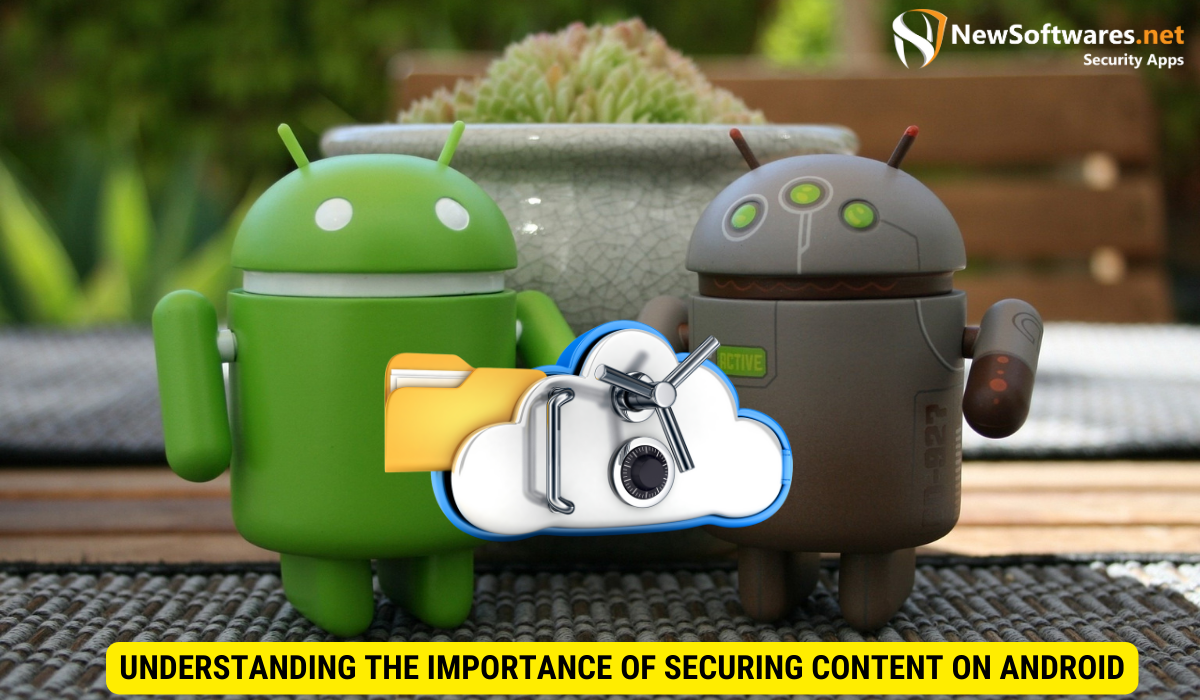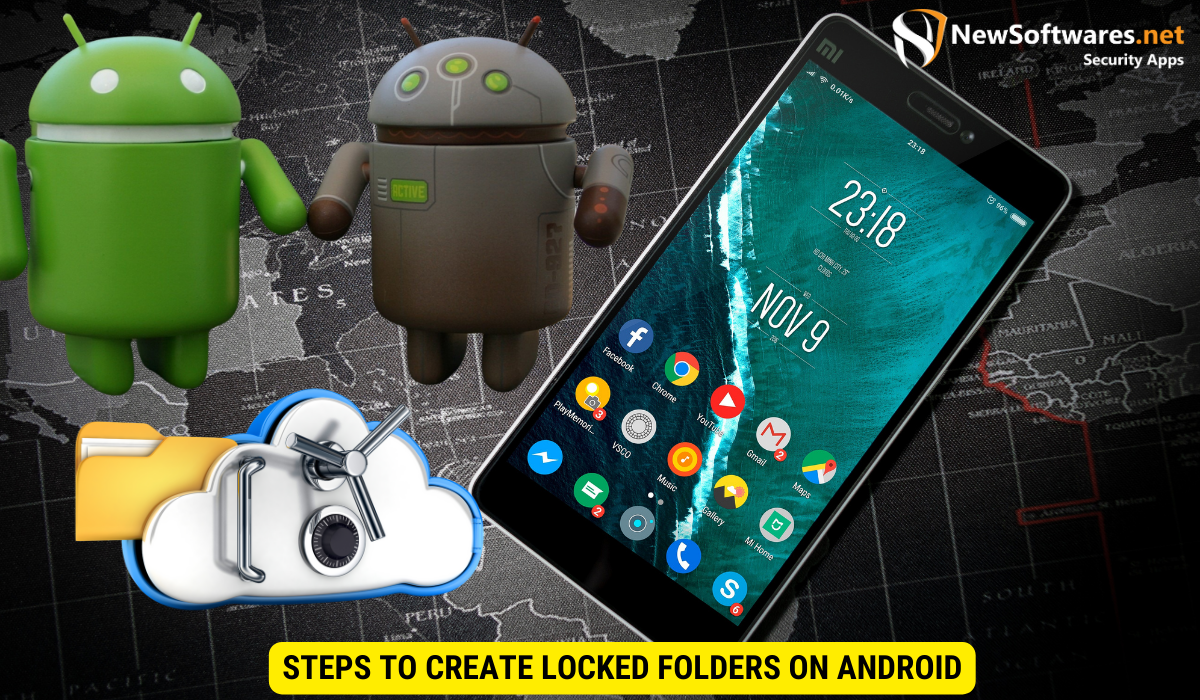To secure personal data on Android, create locked folders using third-party apps. Set up a password, add content, and manage folders to enhance security and control over sensitive information.
In today’s digital age, securing our personal and sensitive content is of paramount importance. With the increasing use of smartphones, it becomes essential to protect our data from prying eyes. Fortunately, Android provides a powerful feature that allows us to create locked folders, ensuring the security of our content. Together, we will explore the importance of securing content on Android, understand the basics of the Android folder structure, delve into locked folders, and learn how to create and manage them effectively.
Understanding the Importance of Securing Content on Android

The risks associated with unsecured content on Android can be significant. From privacy breaches to unauthorized access, our personal information can be at stake. By securing our content, we can mitigate these risks and maintain control over our data.
Android, being one of the most widely used operating systems globally, is a prime target for cyber threats. Hackers are constantly looking for vulnerabilities to exploit, making it crucial for users to prioritize content security on their devices.
Ensuring the security of content on Android devices goes beyond just protecting personal data; it also extends to safeguarding financial information, login credentials, and even sensitive work-related documents. The implications of a security breach can be far-reaching, impacting not only individuals but also organizations and businesses.
The Risks of Unsecured Content
When we leave our content unprotected, we run the risk of unauthorized access. This could lead to identity theft, loss of sensitive information, or the compromising of personal files. By not securing our content, we’re essentially leaving the door wide open for potential breaches.
Moreover, unsecured content is susceptible to accidental deletion, data corruption, or device theft. These scenarios can result in the permanent loss of valuable information or cherished memories.
It’s essential to understand that the consequences of inadequate content security go beyond just the digital realm. In cases where personal photos, videos, or documents are compromised, the emotional impact on individuals can be profound, leading to feelings of violation and loss of privacy.
The Benefits of Content Security
Securing our content offers a wide range of benefits, empowering us with peace of mind and control over our digital lives. By implementing appropriate security measures, we can:
- Safeguard our personal and sensitive information
- Protect our privacy from prying eyes
- Prevent accidental deletion or modification of files
- Mitigate the risk of unauthorized access
- Maintain the integrity of our data
Furthermore, content security measures can also enhance the overall performance of Android devices by reducing the likelihood of malware infections and optimizing system resources. By prioritizing security, users can enjoy a seamless and worry-free digital experience.
The Basics of Android Folder Structure
To effectively create and manage locked folders on Android, it’s essential to understand how the Android operating system organizes files and folders. Android follows a hierarchical folder structure, similar to most file systems.
How Android Organizes Files and Folders
At the root of the Android file system are several predefined folders that serve specific purposes. These folders include the system folder, which contains important system files, and the data folder, which stores app data.
Within the data folder, each installed app has its own dedicated folder, where it stores its data and files. This organizational structure ensures that apps operate independently and do not have access to each other’s data.
Understanding Android’s File System
Android’s file system utilizes the Linux file system architecture. It comprises directories and files, with directories acting as containers for other directories and files. Understanding this file system is crucial for creating locked folders on Android.
Delving deeper into Android’s file structure, we find the cache folder, which stores temporary data generated by apps. This temporary data helps apps load faster and perform efficiently. Additionally, the Android folder houses critical system files necessary for the proper functioning of the operating system.
Another essential component of Android’s folder structure is the obb folder, which stands for opaque binary blob. This folder is used by apps to store large files that are not easily modified by users. These files often contain additional resources such as graphics, media files, or other assets required by the app.
An Overview of Locked Folders on Android
Locked folders offer an additional layer of security by encrypting our content and preventing unauthorized access. These folders allow us to keep our private photos, videos, documents, and other sensitive files hidden from prying eyes.
What are Locked Folders?
Locked folders are encrypted containers where we can store our private content securely. These folders are password-protected, meaning only authorized users with the correct password can access the content stored within them.
How Do Locked Folders Enhance Security?
Locked folders enhance security by encrypting our files and rendering them inaccessible without the correct password. This encryption ensures that even if someone gains unauthorized physical access to our Android device, they cannot access the content within locked folders.
Steps to Create Locked Folders on Android

To create locked folders on Android, follow these simple steps:
Preparing Your Android Device
Before creating locked folders, ensure that your Android device meets the necessary requirements:
- Ensure your device is running on the latest version of Android
- Ensure you have sufficient storage space for the locked folders
- Backup your important data before proceeding
Once you have completed these preparations, you are ready to create your locked folders.
Creating a Locked Folder
To create a locked folder on Android:
- Download and install a reliable third-party app that offers locked folder functionality. There are several options available on the Google Play Store.
- Open the app and follow the on-screen instructions to set up a password for your locked folder.
- Once the password is set, you can begin creating locked folders within the app.
Adding Content to Your Locked Folder
To add content to your locked folder:
- Open the locked folder app on your Android device.
- Navigate to the desired location within the app and select the files or folders you want to add to your locked folder.
- Follow the app’s instructions to import the selected content into your locked folder.
Managing Your Locked Folders
Once you have created and populated your locked folders, it is important to know how to effectively manage them.
Accessing Your Locked Folder
To access your locked folder:
- Open the locked folder app on your Android device.
- Enter the password you set during the initial setup.
- Once authenticated, you can access and view the content stored within your locked folder.
Changing Folder Permissions
Locked folders often allow granular control over folder permissions. Consider customizing folder permissions to enhance security and control over your content. This way, you can restrict access to certain files or folders within your locked folder.
Deleting or Modifying Locked Folders
Should you decide to delete or modify a locked folder:
- Open the locked folder app on your Android device.
- Find the folder you wish to delete or modify and follow the app’s instructions to perform the desired action.
Key Takeaways
- Securing our content on Android is essential to protect our personal information and maintain control over our data.
- Unsecured content on Android poses risks such as unauthorized access, accidental deletion, and data corruption.
- Creating locked folders on Android enhances security by encrypting content and requiring a password for access.
- To create locked folders, download a trusted third-party app, set a password, and import content into the locked folders.
- Manage locked folders by accessing them with the correct password, customizing folder permissions, and deleting or modifying as needed.
FAQs
Q: Can I create multiple locked folders on Android?
A: Yes, most locked folder apps allow you to create and manage multiple locked folders, each with its own designated password.
Q: Will creating locked folders impact the performance of my Android device?
A: While there may be a slight impact on performance, it is generally minimal. Locked folder apps are designed to operate efficiently while maintaining the security of your content.
Q: Can I share content from my locked folder with others?
A: Some locked folder apps offer the ability to share specific content from within the app. However, be cautious when sharing sensitive information and ensure you are using a secure method of sharing.
Q: What happens if I forget the password to my locked folder?
A: If you forget the password to your locked folder, you may need to follow the app’s instructions for password recovery or reset. Be aware that some apps may not provide a recovery option, resulting in permanent data loss.
Q: Are there any alternative methods for securing content on Android?
A: Yes, there are several alternative methods you can employ to secure your content on Android. These include encrypting individual files, utilizing password-protected archives, or leveraging built-in security features offered by your device.
Conclusion
Securing our content on Android is a crucial step in safeguarding our personal information and maintaining control over our digital lives. By creating locked folders and following proper security practices, we can mitigate the risks associated with unauthorized access and protect our sensitive data effectively.
